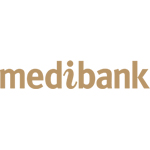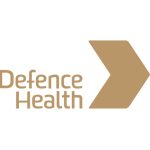Glaucoma is a group of eye conditions that lead to blindness
We aim to halt the progression of your glaucoma with medications, laser treatment and surgery
Discover how we’ll help you maintain your vision for the rest of your life
In this video, Dr. Judy Ku outlines the steps involved in managing your glaucoma
Take the first step to save your eyesight from glaucoma
Book a consultation, and one of our Brisbane eye experts will guide you towards the most suitable glaucoma treatment for your unique situation so you can take back control of your life
Useful information about glaucoma
Glaucoma incidence / prevalence
What is glaucoma?
Glaucoma or open-angle glaucoma (OAG) is a condition in which the optic nerve, the structure responsible for transmitting information from the eye to the brain, becomes progressively damaged.
Glaucoma causes a gradual loss of the optic nerve fibres, which slowly affects the eye and vision over time. The peripheral vision is usually affected before the central vision. In advanced glaucoma, patients can be left with “tunnel vision”.
Early detection of glaucoma is critical for preventing vision loss. However, there are often no apparent symptoms in the early stages of the disease. OKKO Eye Specialist Centre specialises in early testing and will help you manage glaucoma diagnosis and treatment.
Glaucoma causes
Damage to the optic nerve is most commonly caused by high pressure within the eyeball, known as intraocular pressure. Intraocular pressure is determined by the eye’s fluid production called aqueous humour and the drainage of this fluid into the bloodstream via specialised tissue.
The body regulates this fluid’s production and drainage; however, with OAG, this balance is not adequately maintained, and intraocular pressure increases as a result.
Other risk factors for glaucoma include older age, a positive family history, diabetes, higher short-sightedness and previous trauma to the eye.
Glaucoma diagnosis and examination process
Early detection is critical for preventing severe vision loss, so you mustn’t wait for symptoms before getting tested for glaucoma.
Glaucoma testing may include a non-invasive examination of the optic nerve using a special microscope and scanning devices, a measurement of the intraocular pressure, and a computerised visual field test to measure peripheral vision.
A positive diagnosis can be difficult in the early stages, and multiple tests are usually required. If we cannot make a definite diagnosis, your eye care practitioner may elect to monitor you closely over several appointments with repeated testing before commencing treatment.
Glaucoma treatments
Glaucoma treatments attempt to lower the intraocular pressure of the eye to prevent further progression. Still, they are unable to reverse any optic nerve damage or vision loss that has occurred. This is why early detection is so important.1ScienceDaily. 2021. Early predictor for glaucoma identified. [online] Available at: <https://www.sciencedaily.com/releases/2013/01/130102083613.htm> [Accessed 24 June 2021].
The current first-line treatment for glaucoma is eye drops. Most glaucoma medications are safe to use and have minimal ocular and systemic side effects.2Glaucoma Research Foundation. 2021. Glaucoma Medications and their Side Effects. [online] Available at: <https://www.glaucoma.org/gleams/glaucoma-medications-and-their-side-effects.php> [Accessed 24 June 2021].
Sometimes more than one drop is required to stabilise the intraocular pressure, and dosing varies from once a day to three times a day.
Sometimes, more than one type of anti-glaucoma medication is required to control your intraocular pressure adequately. This kind of treatment is usually an ongoing commitment for life.
Other treatment options for glaucoma include laser and, in more advanced cases, surgery.
Selective Laser Trabeculoplasty (SLT) is a special laser applied to the trabecular meshwork in an attempt to improve the outflow of aqueous fluid. SLT can be considered a first-line treatment in suitable patients or if a patient has had a suboptimal response to anti-glaucoma medication or is not tolerating the eyedrops.
SLT is very safe and painless3articles, M., (SLT), T., Lindfield, M. and Doctors, T., 2021. Benefits of selective laser trabeculoplasty (SLT) | Top Doctors. [online] Top Doctors. Available at: <https://www.topdoctors.co.uk/medical-articles/benefits-of-selective-laser-trabeculoplasty-slt> [Accessed 24 June 2021].; however, you may require more than one treatment for maximal effect. The efficacy of SLT may also reduce over time, and some patients still need ongoing medical therapy (eye drops) despite SLT treatment.
We only consider treating advanced glaucoma with surgery and/or if medical therapy or laser have been insufficient in stopping the progressive optic nerve damage and/or vision loss.
There are numerous surgical options for OAG, including but not limited to insertion of small minimally-invasive stent-like devices to help encourage drainage of the aqueous humour from the eye, tube insertion, or trabeculectomy surgery. When necessary, our trained ophthalmologists who specialise in glaucoma management can discuss these options further with you.
Glaucoma FAQs
Are there different types of Glaucoma?
Yes. The main types of glaucoma are open-angle glaucoma and angle-closure glaucoma (ACG).
In ACG, the fluid inside the eye becomes increasingly blocked. In an acute ACG attack, the drainage channel becomes completely blocked, and there is a rapid increase in intraocular pressure accompanied by a red, painful eye. Your eye care practitioner can screen you to determine if you are at risk of developing ACG in the future.
Additionally, OAG sometimes occurs secondary to other ocular conditions. These include pigment dispersion syndrome, pseudoexfoliation syndrome and inflammatory eye disease (uveitis). Use of steroid eye drops and trauma to the eye can also cause secondary open-angle glaucoma.
What is open-angle glaucoma?
Open-angle glaucoma (OAG) is an eye condition that causes damage to the optic nerve and the nerve tissue, causing it to become increasingly thinner over time. Vision gradually becomes affected, with peripheral vision generally being affected before central vision.
Damage to the optic nerve occurs because of high pressure within the eyeball (intraocular pressure); however, this is not always the case. Some people have elevated intraocular pressures (defined as greater than 21mmHg) but have no evidence of damage to the optic nerve or their vision. These patients have high eye pressure in the eye, known as ocular hypertension. They may be more at risk of developing open-angle glaucoma in the future and require close monitoring.
Conversely, some people have normal intraocular pressures (10 to 21mmHg) but still show optic nerve damage and/or vision loss. These patients have a condition known as normal-tension glaucoma. Currently, medical professionals believe that normal-tension glaucoma is caused by poor blood flow through the optic nerve.
What are the symptoms of open-angle glaucoma?
People with early OAG generally do not present with symptoms as the progression of the condition is slow.
However, as the optic nerve becomes more damaged, people start to notice that their peripheral vision or vision adjacent to their central vision becomes blurred.
If you do not start treatment, the visual field can continue to deteriorate. In advanced glaucoma, patients can end up with ‘tunnel vision’.
Do not wait for symptoms before getting tested for glaucoma. Vision loss from glaucoma is often insidious and cannot be reversed; hence it is often called the ‘sneak thief of sight’. Early detection can potentially preserve vision over the long term.4ScienceDaily. 2021. Early predictor for glaucoma identified. [online] Available at: <https://www.sciencedaily.com/releases/2013/01/130102083613.htm> [Accessed 24 June 2021].
Who is at risk of developing open-angle glaucoma?
Several risk factors can increase the likelihood of someone developing OAG. These include:
- Age (OAG is more likely in people over 40 years of age)
- Family history of glaucoma
- Ocular hypertension
- African and Latino heritage
- Thinner cornea (the membrane covering the front of the eye)
- Diabetes
- High short-sightedness
- Previous ocular trauma
- Extremely high or low blood pressure
Glaucoma treatment FAQs
How is open-angle glaucoma detected?
Diagnosing OAG can be difficult in the early stages, and multiple tests are usually required. In cases where we cannot make a definitive diagnosis, your eye care practitioner may need to monitor you closely initially before deciding to start treatment.
Eye examination
We will measure your visual acuity on a letter chart and examine the optic nerve at the back of your eye using a magnifying lens and a slit lamp microscope. We may also use a special contact lens (gonioscopy lens) to screen people who may be at risk of angle-closure glaucoma.
Tonometry
Tonometry is the measurement of intraocular pressure. Several instruments measure intraocular pressure, such as applanation tonometers, non-contact (puff) tonometers, and rebound tonometers.
Intraocular pressures are generally higher in people with thicker corneas and lower in those with thin corneas. Your eye care practitioner may also measure the thickness of your cornea using similar instruments to determine the pressure measurements’ accuracy.
Intraocular pressures can vary by about 3-6mmHg over a day. Intraocular pressures are highest in the morning’s early hours and lowest at the end of the day. Your eye care practitioner may recommend a drink water test to evaluate the extent of variation. This test involves drinking about 1L of water to simulate peak intraocular pressure and determine the efficacy of the eye’s drainage pathway (known as the trabecular meshwork).
Pressure measurements are then taken every 15 minutes for an hour.
Visual field testing
Visual field testing is a measurement of the peripheral vision performed on a computerised machine capable of mapping out your field of vision based on your response to visual light targets.
Initially, a visual field test can be hard to perform accurately. Performance improves significantly on repeat testing. You may need to do 2-3 visual field tests to generate reliable, repeatable results for your eye care practitioner’s interpretation.
Retinal nerve fibre layer (RNFL) analysis
Retinal nerve fibre layer (RNFL) analysis non-invasively and quantitatively measures the nerve tissue’s thickness around the optic disc. Like visual field testing, RNFL analysis is used to help in the diagnosis of Glaucoma and aid in monitoring response to treatment.
How is open-angle Glaucoma treated?
Reducing the intraocular pressure in the eye is currently the only method of treating Glaucoma. We cannot reverse damage to the optic nerve, so early detection is critical for preserving vision.5ScienceDaily. 2021. Early predictor for glaucoma identified. [online] Available at: <https://www.sciencedaily.com/releases/2013/01/130102083613.htm> [Accessed 24 June 2021].
Medical therapy
The mainstay treatment for OAG is intraocular pressure-reducing eye drops. There are several different classes and subtypes of glaucoma medications. The drops either reduce the production of fluid or aid the drainage to relieve pressure.
Most glaucoma medications are safe to use and have minimal side-effects. Dosing varies from once a day to three times a day. Your eye care practitioner will discuss in detail with you any known adverse drug reactions and or potential interactions with your other medications before commencing treatment.
You may require more than one type of anti-glaucoma medication to control the intraocular pressure in your eye. Medical therapy will usually be an ongoing commitment for life.
Selective laser trabeculoplasty (SLT)
Selective laser trabeculoplasty (SLT) is a special laser that we apply to the eye’s drainage system to improve fluid flow from the eye.
SLT can be considered as a first-line treatment option in suitable patients or if there has been an inadequate response to anti-glaucoma medication or intolerance of eyedrops. Laser treatment is very safe and painless; however, you may require more than one treatment for maximal effect. The efficacy of SLT may also reduce over time. Some patients still need ongoing medical therapy despite SLT treatment.
Glaucoma surgery
We usually consider surgery to treat advanced OAG when neither medical therapy nor laser has been sufficient at stopping optic nerve damage and/or vision loss. There are numerous surgical options for OAG, including the insertion of minimally invasive stent-like devices, trabeculectomy, and insertion of a drainage implant or shunt.
Where does intraocular pressure come from?
Intraocular pressure is primarily determined by two things – the production of fluid (aqueous) and drainage of fluid into the bloodstream via the eye’s drainage system.
The body regulates the production and drainage of this fluid to create an optimal balance. In OAG, this balance is not adequately maintained (i.e. too much production or not enough drainage) and intraocular pressure increases as a result.
How to get help from our team of eye experts
Get the expert eye treatment you need in 3 easy steps

Step 1 – Reach out
Give us a call on: 3725 0222 and we’ll guide you towards an initial consultation.

Step 2 – We’ll meet
During your initial consultation, we will take a detailed medical history and examination to make an accurate assessment of the issue at hand.

Step 3 – Your vitality restored
We will treat you at one of our state-of-the-art Brisbane eye clinic facilities, with the aim of giving you the optimism and confidence to re-engage with life.
As seen on TV
OKKO aims to provide life-changing vision transformation to patients
Insurers
We’ve got you covered, OKKO is pleased to work with all the insurers below:
Links to authoritative resources on glaucoma
Our Brisbane eye specialists
We are dedicated to providing you with the best possible eye health and vision outcomes

Dr. Matthew Russell, MBChB, FRANZCO
Brisbane Eye Surgeon
I am a specialist ophthalmic microsurgeon, internationally trained retinal surgeon, medical retinal diseases specialist, and cataract surgeon. With a career that spans over 15 years, I have mastered the ability to achieve precise results with the aim of helping patients regain their confidence and youthful energy.

Dr Judy Ku, MBChB, FRANZCO
Specialist ophthalmic surgeon
I am a specialist in glaucoma, cornea & external diseases and cataract surgery. I am passionate about assisting my patients to achieve their full visual potential. I feel extremely privileged to have the opportunity to restore sight and to improve people’s quality of life.
Take the first step to get more clarity from your vision and confidence in your life
Book a consultation, and one of our Brisbane eye experts will guide you towards the very best treatment for your eyes so you can get the results you’re looking for
















